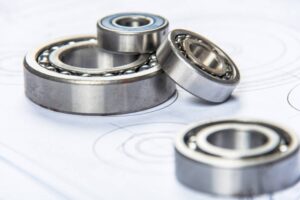
Thermoforming tooling is a vital component in the plastic manufacturing process, where a flat plastic sheet is heated until it becomes malleable and then formed over a mold to create a specific shape. This process is widely used across various industries for producing everything from packaging to automotive components. Thermoforming tooling refers to the custom-designed tools and molds that shape the heated plastic into the desired final product. Effective tooling is essential for achieving high-quality, consistent, and durable products, making it a critical focus in thermoforming production.
Thermoforming tooling comes in different types, each designed for specific production needs. Here are the main types:
Prototype Tooling: This type of tooling is used for initial design and testing purposes. Prototype tooling allows manufacturers to create samples and assess the design’s feasibility without committing to high production costs. These tools are typically made from less durable materials, such as resin or foam, since they’re not intended for long-term use.
Production Tooling: Unlike prototype tooling, production tooling is built for longevity and efficiency. These tools are made from stronger materials like aluminum or steel and are designed to withstand repetitive usage in large production runs. Production tooling is more expensive than prototype tooling but essential for ensuring that each product meets the same quality standards.
Custom Tooling: Custom tooling is tailored to a company’s specific product requirements. If a manufacturer has unique design specifications or complex product shapes, custom thermoforming tooling becomes necessary. Custom tools are engineered to provide precise detail, high durability, and compatibility with advanced machinery, often leading to highly efficient production processes.
Thermoforming tooling consists of several key components:
Molds: The core of thermoforming tooling, molds shape the plastic into the desired form. Molds can be either male (positive) or female (negative) based on the desired final product shape and design. Each mold type offers unique advantages in terms of surface quality and dimensional accuracy.
Forming Stations: These stations are responsible for heating and forming the plastic over the mold. The forming station must precisely control the temperature and pressure to ensure even plastic distribution and a smooth final product.
Trim Tooling: After forming, excess material is trimmed off to ensure a clean and finished product. Trim tooling is specifically designed to provide accurate cutting, which is critical for products requiring tight tolerances and precise dimensions.
Thermoforming Tooling Materials
Choosing the right materials for thermoforming tooling is essential for product quality and production efficiency. Some of the most common materials used include:
Aluminum: Known for its lightweight nature, aluminum is highly durable and ideal for long production runs. It’s commonly used in both prototype and production tooling.
Steel: Steel molds are strong, durable, and capable of withstanding high temperatures and pressures. Although more costly, steel is ideal for production tooling where high product consistency is required.
Resins: Resin molds are often used for prototype tooling due to their low cost and quick production turnaround. However, they are less durable than aluminum or steel, making them unsuitable for large production runs.
Advantages of High-Quality Thermoforming Tooling
Investing in high-quality thermoforming tooling offers several benefits for manufacturers:
Consistency and Precision: High-quality tooling ensures that each product in a production run has the same shape, size, and quality. Precision molds allow for complex shapes and detailed designs, which can be crucial for product functionality and aesthetics.
Efficiency: Reliable tooling reduces the likelihood of defects, minimizing waste and reducing the need for rework. This efficiency saves time and materials, leading to cost savings in the long run.
Durability: High-quality materials like aluminum and steel provide durability, allowing molds to withstand the wear and tear of long production cycles. Durable tools can last for thousands of production cycles, making them a cost-effective investment.
Customization: Custom tooling enables manufacturers to create unique product designs, which can be a competitive advantage. Custom molds can incorporate intricate details and features that set a product apart in the market.
Thermoforming Tooling in Different Industries
Thermoforming tooling is used across a range of industries, each with specific requirements and challenges:
Packaging: In the packaging industry, thermoforming is used to create containers, trays, and clamshell packaging. Tooling must be precise to ensure each piece fits securely and offers proper protection for the product.
Automotive: The automotive industry utilizes thermoforming for components like interior panels, dashboards, and bumpers. Here, tooling requires durability and precision, as parts must fit perfectly to ensure both functionality and aesthetics.
Medical: Medical equipment often requires sterile and precision-made plastic components. Thermoforming tooling used in this sector must meet strict regulatory standards, ensuring that products are safe for medical use.
Consumer Goods: For products like household appliances, toys, and electronics, tooling must be versatile to accommodate various shapes and sizes. Custom tooling in this sector allows manufacturers to create unique designs tailored to consumer preferences.
Cost: High-quality tooling, especially for production runs, can be expensive due to the materials and precision engineering required.
Lead Time: Designing, testing, and manufacturing tooling takes time. Rapid prototyping and other advances are helping reduce lead times, but it remains a factor, especially for custom tooling.
Material Selection: Choosing the right materials for tooling is essential for ensuring product quality. Manufacturers must balance cost, durability, and production volume when selecting materials.
As technology advances, thermoforming tooling is becoming more efficient and precise. Some key trends shaping the future include:
3D Printing: 3D printing is allowing for faster prototyping and customization of tooling. Manufacturers can quickly produce molds and make adjustments, significantly reducing lead times.
Automation: Automation in the tooling process is improving production efficiency and consistency. Automated systems can handle complex tooling setups, reducing labor costs and minimizing errors.
Advanced Materials: New materials, such as composite metals and high-durability resins, are being developed for tooling. These materials offer improved strength, heat resistance, and longevity, making them ideal for demanding applications.
Thermoforming tooling is an essential element of modern manufacturing, enabling the production of high-quality plastic components across various industries. With the right tooling, manufacturers can achieve consistent, efficient, and durable production, providing the foundation for everything from food packaging to automotive parts. Investing in quality tooling materials and processes not only improves product quality but also offers long-term savings by reducing waste and increasing production efficiency.





